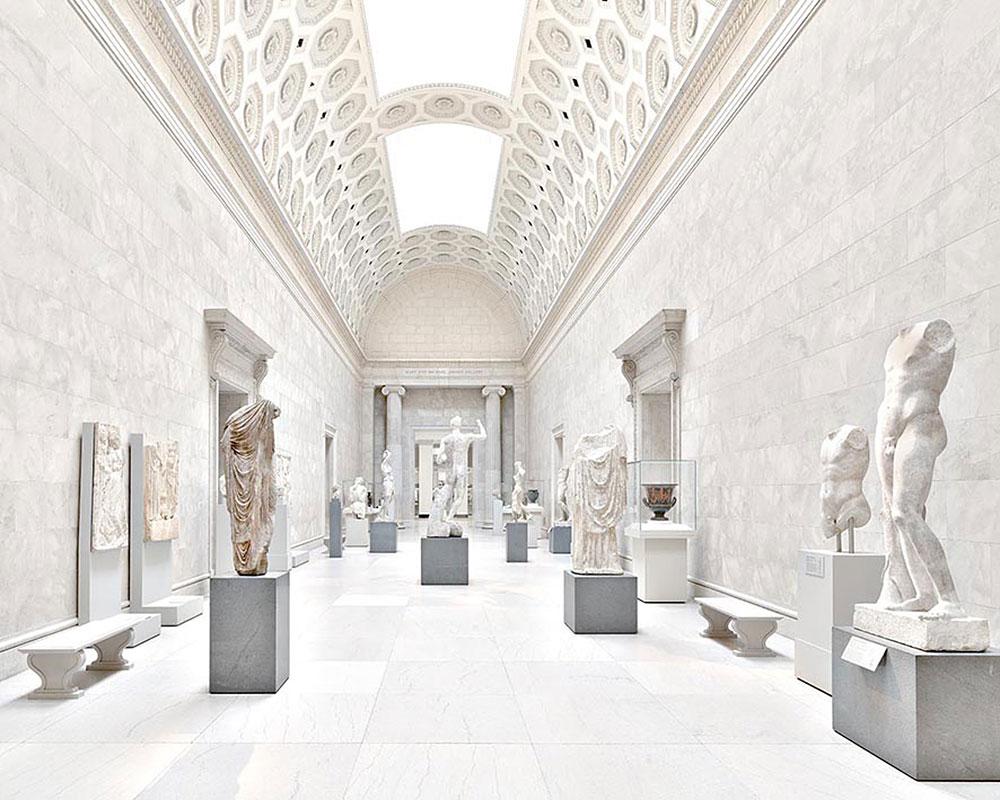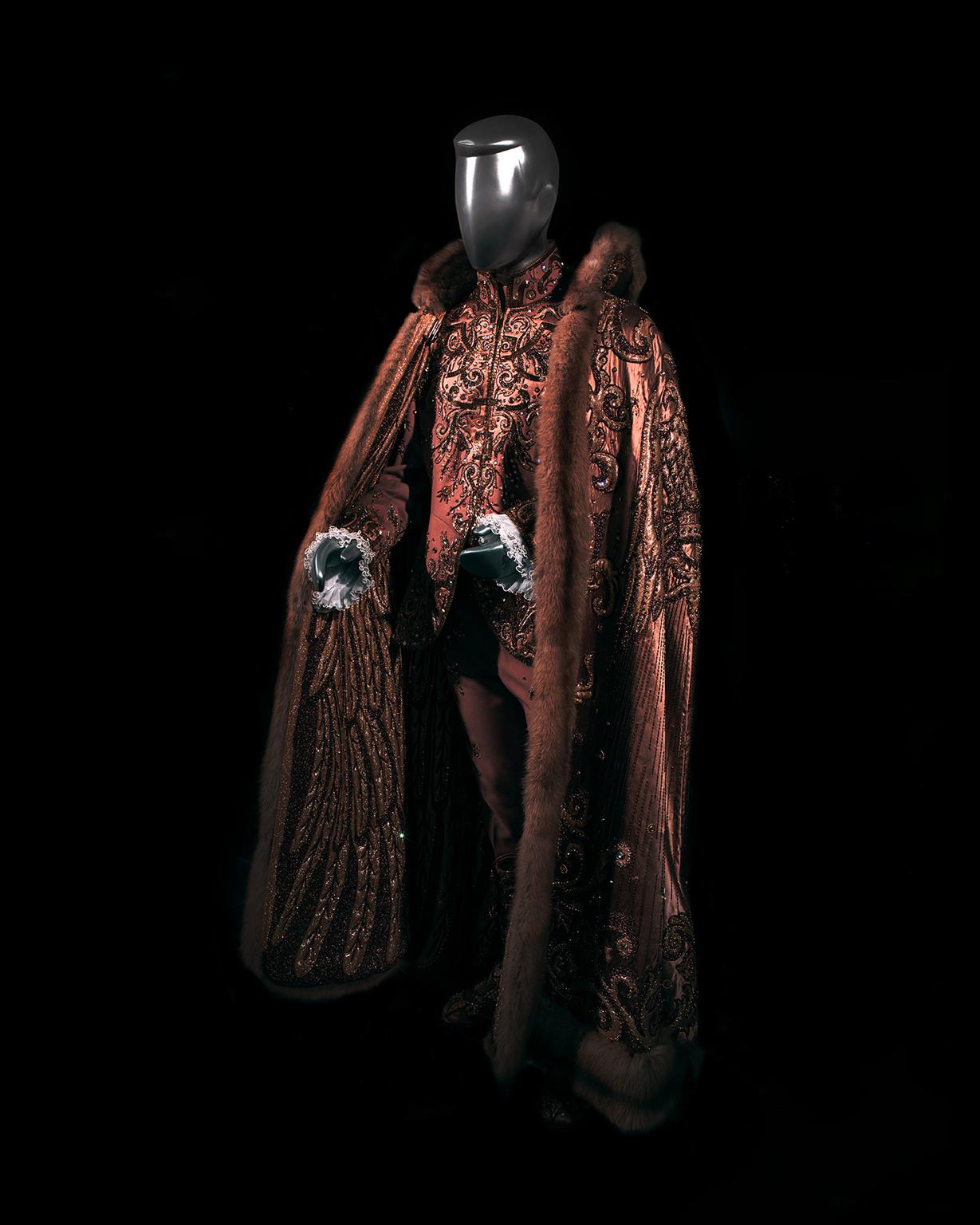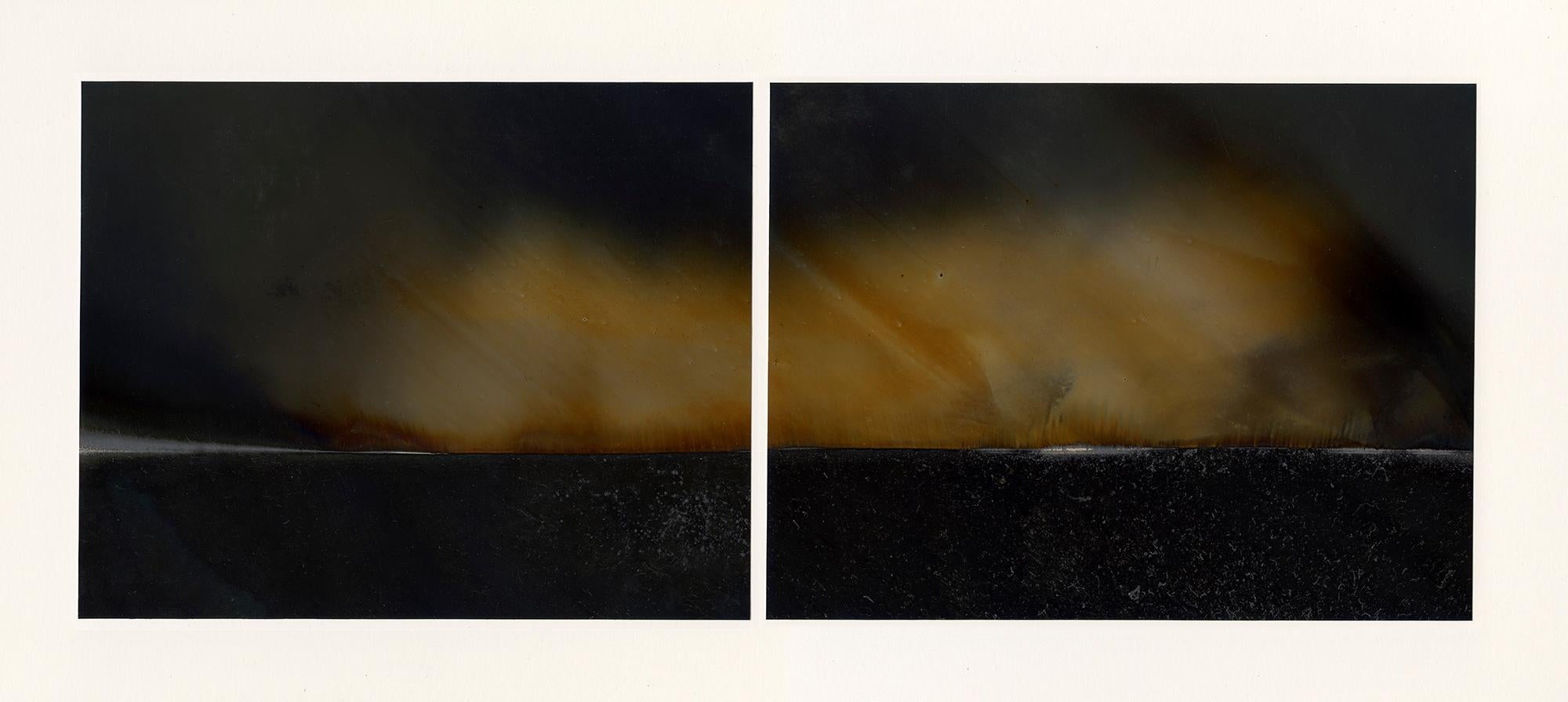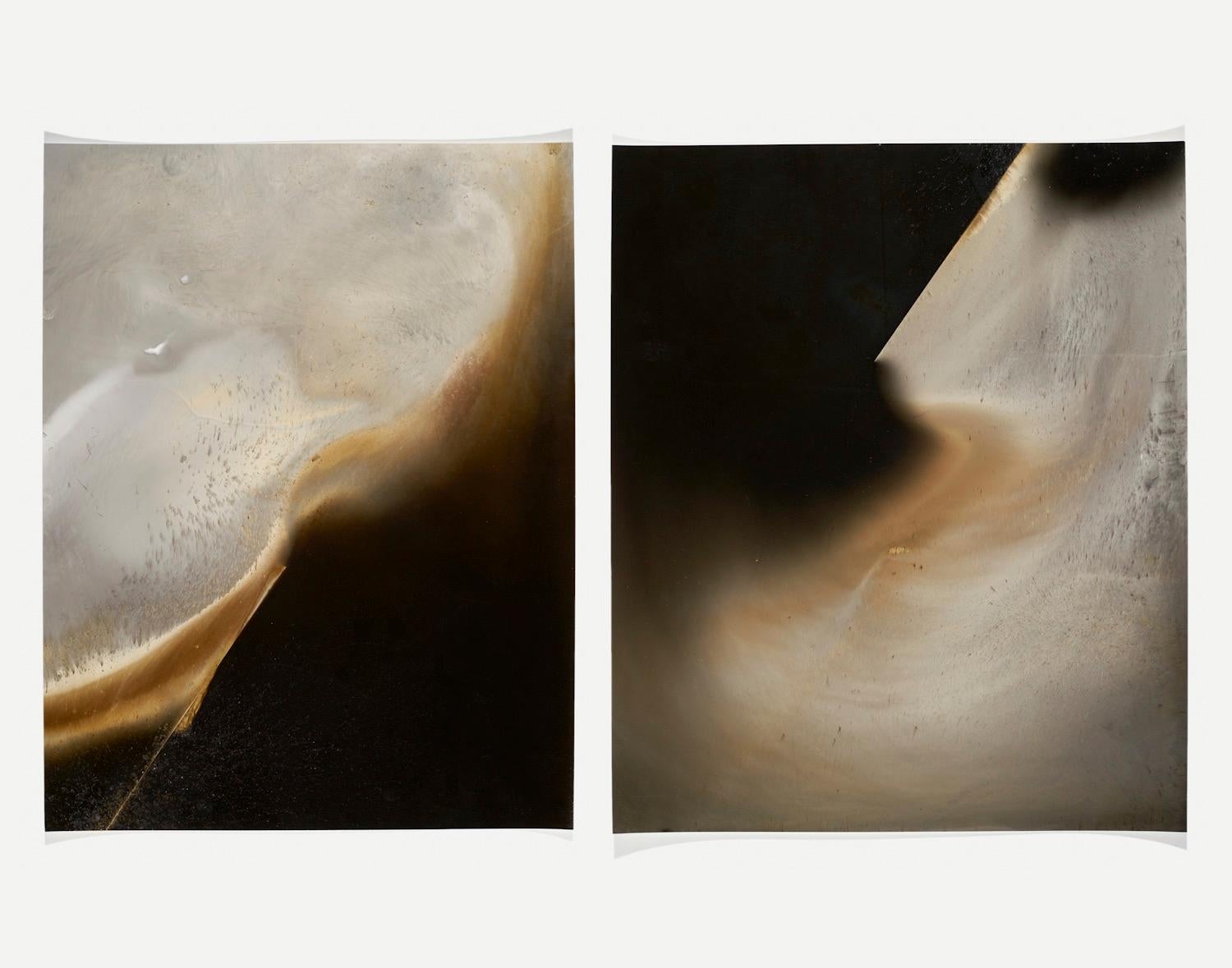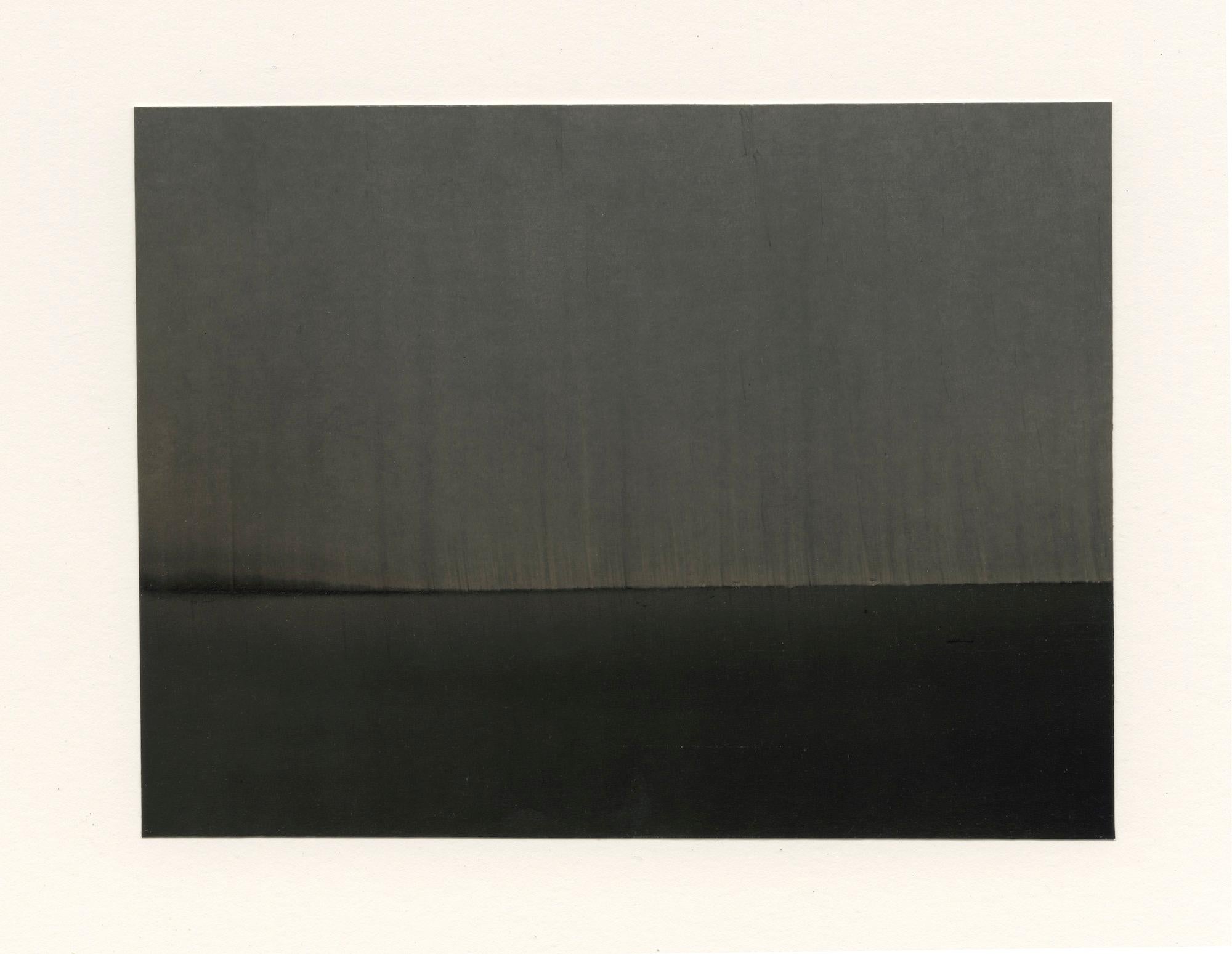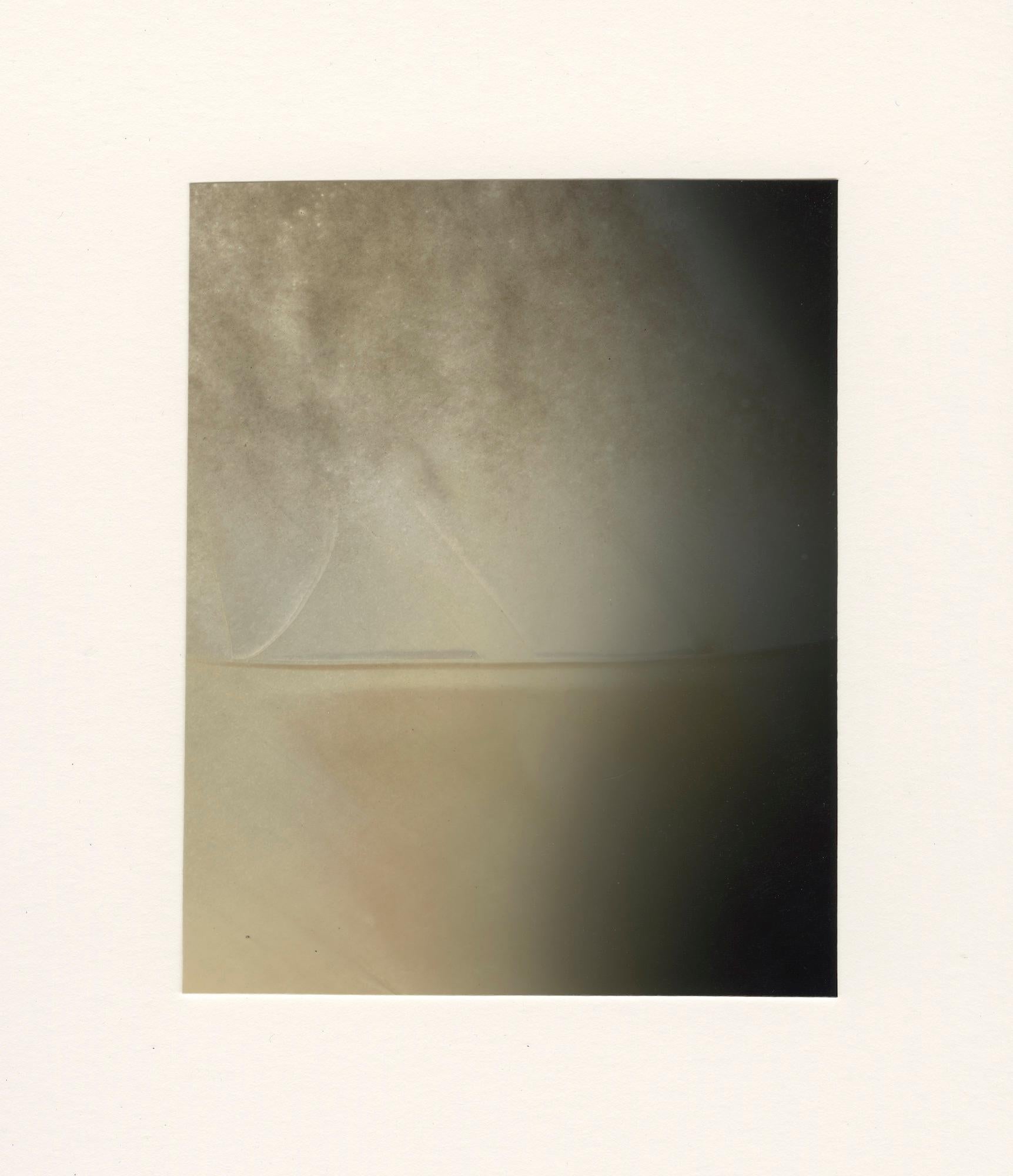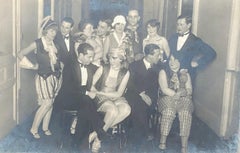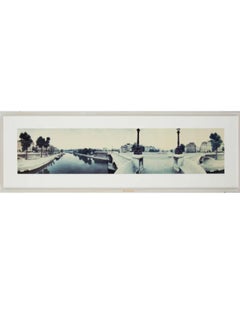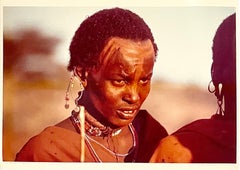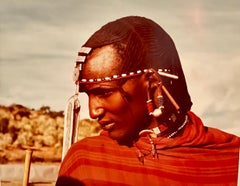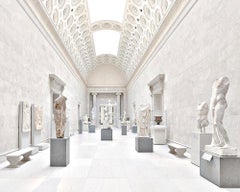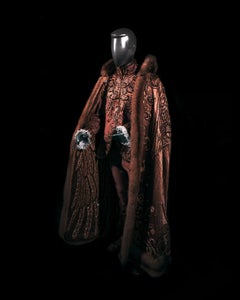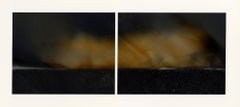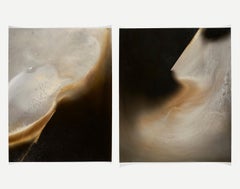Items Similar to Rare Harry Bowers Vintage C Print Photograph From Ten Photographs Fashion Photo
Want more images or videos?
Request additional images or videos from the seller
1 of 11
Harry BowersRare Harry Bowers Vintage C Print Photograph From Ten Photographs Fashion Photo1984
1984
About the Item
HARRY BOWERS
T E N P H O T O G R A P H S
I DON'T LOOK FOR PHOTOGRAPHS I INVENT THEM
I recall my first meeting with Harry Bowers in California a few years ago. As he produced his large-scale prints, I was at first flabbergasted, not only by their size, but by their seamless perfection. Technique appeared to be everything but then technique as technique simply vanished. After the first moment, technique was no longer an issue, but rather a passageway to the imagery.
Suffice it to say about Harry Bowers' working style that he is an obsessive man. Trained as an engineer, he has turned that discipline to art. His lenses, equipment and darkroom, much of it exactingly manufactured by himself to answer certain needs, serve the desire of the artist to take photographic technique to its ultimate perfection in invisibility and transparency. I respect obsession in art, and particularly in photography, because obsession in photography passes beyond the easy, middle ground of image making to a more demanding, more difficult, yet more rewarding end. Bowers' obsession is to eliminate "photography as technique." No grain, no decisive moments, no journalism, or, seemingly, direct autobiographical endeavors appear in his work.
Bowers is an artist of synthesis who controls his environment if only in the studio exactly to his liking. The images he creates are formal structures, saucy stories on occasion, which may offer hints of a darker, more frightening sexuality, but what you see is the end product of an experiment in which nothing save the original insight perhaps is left to chance.
We seem fascinated with the idea of replication of reality in art. Popular painting frequently reproduces a scene "with the accuracy of a photograph," and photographs may "make you feel as though you were right there." The very invisibility of the photographic medium is important to Bowers, in that it allows him to maneuver his subject matter without concern for rendering it in an obvious art medium which would interfere with the nature of the materials he uses. The formal subtleties of Bowers' recent work are as delicious and ambiguous in their interrelationships as the best Cubist collages, yet while those collages always suggest their parts through edge and texture, these photographs present a structure through a surface purity.
Bowers' earlier works, for example, the Skirts I Have Known series, were formed of bits of clothing belonging to Bowers and his wife or found at local thrift shops. These works fused an elegance of pattern and texture, reminiscent of Miriam Shapiro's or Lucas Samaras' fabric paintings, with a sense of theater and, on occasion, high eroticism. These clothes are not simply mashed like baled rags into the glass fronted box which fronts the picture plane, but are actors in a subtle dumb show. Early on, Bowers was surprised that so few people took notice of the erotic element in his work, for it forms a distinct and important component of his images, and one which he has continued to exploit, albeit in different ways.
In the last few years Bowers' work has divided into two parallel modes; one continues his fascination with patterns, textures and stuffs pressed into the transparent picture plane, while the other is more directly anthropomorphic. In this second body of work, Bowers frequently uses articulated shadow figures in black or white, carefully adjusted within the image in a provocative way that is often sexually unsettling. But for all their explicit arrangement, these works may be less suggestive than his earlier clothing tableaus. These newer works are more about space, texture, and the extensions of photography, as well as being a comment on sexuality.
Bowers has always been fascinated with space, and recognizing that it cannot be rendered on a flat surface through the camera, he has set about to create an illusion of space on a shallow plane, a true trompe l'oeil achievement. Within these works, the space is still constructed upon the glass panel of the printing frame, but with elements collaged to its front surface as well as pressed within it. The forms, frequently large black and white photographs (a photographer's conceit on the use of photography), often include a seated or crouching figure dressed only in socks and cutoff dungarees, which add an element of personality. The figure and the way in which it is posed also add a quality of vulnerability to his images, not heretofore seen.
One of the best of these images, HB-28-80, uses a photograph of a figure crouching in a fetal position on a chair. The figure has been cut from its background, and the background, in turn, has been taped to the front of the glass pane while the figure, in perfect register with the background, is laminated behind the glass. One of Bowers' articulated shadow figures, one hand trying to hide its genitals, has been placed on top of the figure, also under the plane of glass. The shadow figure follows the curve of the spine of the photographed figure. One cannot help but feel not only the nakedness and tense embarrassment of these two figures, one real and the other schematic, but the anomalous suggestion of a man carrying a fetus within his body.
Bowers' images extend their power in several ways. They are photographs, which are so pure in their technique as to be clear as water. They deal with precise replications of reality, but a reality which has been recontextualized into episodes of both formal and visceral ambiguity. The best of them are wonderful .. contrivances" -his word-and are as frightening in their psychological implications as they are elegant in their visual form.
Thomas H. Garver, Director Madison Art Center
- Creator:Harry Bowers (1938, American)
- Creation Year:1984
- Dimensions:Height: 20 in (50.8 cm)Width: 16 in (40.64 cm)
- Medium:
- Period:
- Condition:
- Gallery Location:Surfside, FL
- Reference Number:1stDibs: LU38210681212
About the Seller
4.9
Platinum Seller
Premium sellers with a 4.7+ rating and 24-hour response times
Established in 1995
1stDibs seller since 2014
1,760 sales on 1stDibs
Typical response time: 1 hour
- ShippingRetrieving quote...Shipping from: Surfside, FL
- Return Policy
Authenticity Guarantee
In the unlikely event there’s an issue with an item’s authenticity, contact us within 1 year for a full refund. DetailsMoney-Back Guarantee
If your item is not as described, is damaged in transit, or does not arrive, contact us within 7 days for a full refund. Details24-Hour Cancellation
You have a 24-hour grace period in which to reconsider your purchase, with no questions asked.Vetted Professional Sellers
Our world-class sellers must adhere to strict standards for service and quality, maintaining the integrity of our listings.Price-Match Guarantee
If you find that a seller listed the same item for a lower price elsewhere, we’ll match it.Trusted Global Delivery
Our best-in-class carrier network provides specialized shipping options worldwide, including custom delivery.More From This Seller
View AllGerman Jewish Weimar Era Silver Gelatin Photograph Pre War Judaica Costume Party
Located in Surfside, FL
Rare German Judaica. Arno Katz Foto for Atelier Bermann, Frankfurt, Germany.
bears original stamp verso
The Weimar Republic (German: Weimarer Republik [...
Category
20th Century Modern Black and White Photography
Materials
Photographic Paper
Kenneth Snelson Vintage C-Print Panoramic Photograph of Paris Chromogenic Photo
Located in Surfside, FL
Kenneth Snelson (American, 1927-2016).
Photograph depicting a panorama of the Seine river and bridges in Paris, France
Hand signed, dated 1985, numbe...
Category
1980s Contemporary Color Photography
Materials
Photographic Paper, C Print
Rare Vintage Color C Print Photograph African Maasai Warrior Chromogenic Photo
By Carol Beckwith
Located in Surfside, FL
Carol Beckwith, (American, b. 1945),
Maasai Portrait
Chromogenic print on paper, from Beckwith's book "Maasai" (1980),
Hand signed in pencil, dated and titled with name of sitter in margins,
19" x 16" Sheet.
Carol Beckwith (1945-) is an American photographer, author, and artist known for her photojournalism documenting the indigenous tribal cultures of Africa, most notably in partnership with the Australian photographer Angela Fisher. Between them, Beckwith and Fisher have published 14 books, and have had their photos appear in National Geographic, Natural History, African Arts, The Observer Magazine, Time, Life, Vogue, Marie Claire and Elle.
They continue to exhibit and lecture at galleries and museums worldwide, including The American Museum of Natural History and The Explorers Club in New York City, The Smithsonian Institution in Washington, DC, and the Royal Geographical Society in London. They have also collaborated on four films about African traditions. Together they have received numerous accolades, including the United Nations Award for Excellence, the Royal Geographical Society's Cherry Kearton Medal, two Anisfield-Wolf Book Awards, The Explorers Club Lowell Thomas Award, and the WINGS WorldQuest Lifetime Achievement Award.
Carol Beckwith was born in Boston, Massachusetts, where she went on to attend both the School of the Museum of Fine Arts, Boston and Goucher College in Maryland. After obtaining her degree in Painting and Photography she won a traveling fellowship from the Boston Museum, which let her travel to other countries for the first time.
She spent seven months in Japan, living in a Zen temple and studying calligraphy painting. She continued to travel through Southeast Asia and New Guinea, where she witnessed a "sing-sing", a gathering of 90,000 Highland warriors, in Mount Hagen, and paddled up Chambri Lakes in a canoe, an experience she called "one of the most wonderful, and in a way formative, experiences in my life." Her first trip to Africa was in 1973, when she was invited to spend Christmas with a friend in Kenya. Beckwith bought a 45-day roundtrip ticket and ended up staying eight months. There she encountered the Maasai people who invited her to witness a female circumcision ceremony. Astonished by the ritual, she then determined to spend more time with the Maasai.
Beckwith studied photography in college but had initially intended to become a painter. It was during her travels through New Guinea that she realized the advantages of photography, saying that "there was such a vast amount of exciting material that I began to photograph instead, approaching photography with the eye of a painter in terms of light, color, composition. I wanted the images to be multi layered experiences in a way that a painting is. . . [Photography] seemed to be a more suitable medium for the pace of travel."
Beckwith's first major collaboration was with Tepilit Ole Saitoti, an anthropologist and former Maasai warrior...
Category
1970s Contemporary Color Photography
Materials
Photographic Paper, C Print
Rare Vintage Color C Print Photograph African Maasai Warrior Chromogenic Photo
By Carol Beckwith
Located in Surfside, FL
Carol Beckwith, (American, b. 1945),
Maasai Portrait
Chromogenic print on paper, from Beckwith's book "Maasai" (1980),
Hand signed in pencil, dated and titled with name of sitter in margins,
19" x 16" Sheet.
Carol Beckwith (1945-) is an American photographer, author, and artist known for her photojournalism documenting the indigenous tribal cultures of Africa, most notably in partnership with the Australian photographer Angela Fisher. Between them, Beckwith and Fisher have published 14 books, and have had their photos appear in National Geographic, Natural History, African Arts, The Observer Magazine, Time, Life, Vogue, Marie Claire and Elle.
They continue to exhibit and lecture at galleries and museums worldwide, including The American Museum of Natural History and The Explorers Club in New York City, The Smithsonian Institution in Washington, DC, and the Royal Geographical Society in London. They have also collaborated on four films about African traditions. Together they have received numerous accolades, including the United Nations Award for Excellence, the Royal Geographical Society's Cherry Kearton Medal, two Anisfield-Wolf Book Awards, The Explorers Club Lowell Thomas Award, and the WINGS WorldQuest Lifetime Achievement Award.
Carol Beckwith was born in Boston, Massachusetts, where she went on to attend both the School of the Museum of Fine Arts, Boston and Goucher College in Maryland. After obtaining her degree in Painting and Photography she won a traveling fellowship from the Boston Museum, which let her travel to other countries for the first time.
She spent seven months in Japan, living in a Zen temple and studying calligraphy painting. She continued to travel through Southeast Asia and New Guinea, where she witnessed a "sing-sing", a gathering of 90,000 Highland warriors, in Mount Hagen, and paddled up Chambri Lakes in a canoe, an experience she called "one of the most wonderful, and in a way formative, experiences in my life." Her first trip to Africa was in 1973, when she was invited to spend Christmas with a friend in Kenya. Beckwith bought a 45-day roundtrip ticket and ended up staying eight months. There she encountered the Maasai people who invited her to witness a female circumcision ceremony. Astonished by the ritual, she then determined to spend more time with the Maasai.
Beckwith studied photography in college but had initially intended to become a painter. It was during her travels through New Guinea that she realized the advantages of photography, saying that "there was such a vast amount of exciting material that I began to photograph instead, approaching photography with the eye of a painter in terms of light, color, composition. I wanted the images to be multi layered experiences in a way that a painting is. . . [Photography] seemed to be a more suitable medium for the pace of travel."
Beckwith's first major collaboration was with Tepilit Ole Saitoti, an anthropologist and former Maasai warrior...
Category
1970s Contemporary Color Photography
Materials
Photographic Paper, C Print
Large Vintage Photograph Polaroid Transfer Photo Print Policeman Smoking, Paris
By David Aschkenas
Located in Surfside, FL
Large scale print, 24 X 34 inches. Framed to 31 X 40. This was described as Polaroid transfer print. It has the feel of a Frisson print. It is hand signed in pencil and dated. It is ...
Category
1990s Modern Color Photography
Materials
Photographic Paper
Large Vintage Photograph Polaroid Transfer Photo Print Borsalino Hat Signed 1996
By David Aschkenas
Located in Surfside, FL
Large scale print, 24 X 34 inches. Framed to 29.5 X 39.5. This was described as Polaroid transfer print. It has the feel of a Frisson print. It is hand signed in pencil and dated. It is done in a sepia color tone.
David Aschkenas is a self-taught photographer making fine art and freelance photography for the past 25 years. He has been the recipient of grants from the NEA and the Polaroid Corporation. He makes photographs for corporations and editorial clients around the world. Aschkenas has been a photographer in Pittsburgh for 30 years, specializing in editorial and fine art photography (he shot Richard Serra's Tilted Arc in the early 1980's) Inspired by Weegee, James Van Der Zee...
Category
1990s Modern Color Photography
Materials
Photographic Paper
You May Also Like
The Metropolitan Museum, New York, USA
By Massimo Listri
Located in New York City, NY
Massimo Listri
Portrait of Interiors
Metropolitan, New York, USA 2013
Unframed
40 x 47 inches
100 x 120 cm
Edition of 5
47 x 59 inches
120 x 150 cm
Edition of 5
71 x 88.5 inches
1...
Category
2010s Post-Modern Color Photography
Materials
Photographic Paper, C Print
Liberace III - large scale photograph of extravagant iconic stage costume
By Christian Stoll
Located in San Francisco, CA
from a series of works observing the intricate details of the iconic star's stage wardrobe, an epic scale photograph of mesmerizing texture details
Liberace III by Christian Stoll
...
Category
21st Century and Contemporary Color Photography
Materials
Archival Ink, Archival Paper, Photographic Paper, Archival Pigment, Giclée
Dark Hours Horizon 98
By Christopher Colville
Located in Sante Fe, NM
Christopher Colville is an American artist working to push the boundaries of the photographic medium in both experimental and traditional forms. His images are created outdoors by ig...
Category
2010s Contemporary Abstract Photography
Materials
Photographic Paper, Silver Gelatin
Untitled Work of Fire Diptych
By Christopher Colville
Located in Sante Fe, NM
Christopher Colville is an American artist working to push the boundaries of the photographic medium in both experimental and traditional forms. His images are created outdoors by ig...
Category
2010s Contemporary Abstract Photography
Materials
Photographic Paper, Silver Gelatin
Dark Hours Horizon 99
By Christopher Colville
Located in Sante Fe, NM
Christopher Colville is an American artist working to push the boundaries of the photographic medium in both experimental and traditional forms. His images are created outdoors by ig...
Category
2010s Contemporary Abstract Photography
Materials
Photographic Paper, Silver Gelatin
Dark Hours Horizon 100
By Christopher Colville
Located in Sante Fe, NM
Christopher Colville is an American artist working to push the boundaries of the photographic medium in both experimental and traditional forms. His images are created outdoors by ig...
Category
2010s Contemporary Abstract Photography
Materials
Photographic Paper, Silver Gelatin
Recently Viewed
View AllMore Ways To Browse
Rare Art Panels
Harry S
Ultimate Rare
California Vintage Clothing
Vintage Illusion Dress
Vintage Invisible Set
Rare Skirt Look
Erotic Dress
S L Fashions Vintage Dress
White 80s Chairs
Stuff Box
Extensions Dress
Ing Chair
Vintage 80s Laminate
Vintage Thrift
Vintage Thrift Shop
Vintage 80s Formal Dresses
Illusion Clothes
